
Last month, the Australian Bureau of Statistics (ABS) released the annual national accounts, which contained land values data for each of Australia’s states and territories, as well as nationally.
This data showed that Australian residential land values relative to GDP had deflated further to 1.90 times GDP in June 2012 from a peak of 2.35 times GDP in June 2010 and 2.14 times GDP in June 2011. Because of this deflation in land values, total dwelling values, which includes both the land and structure (physical building) components, had similarly fallen to 2.74 times GDP in June 2012 from a peak of 3.23 times GDP in June 2012 and 2.99 times GDP in June 2011 (see below chart).
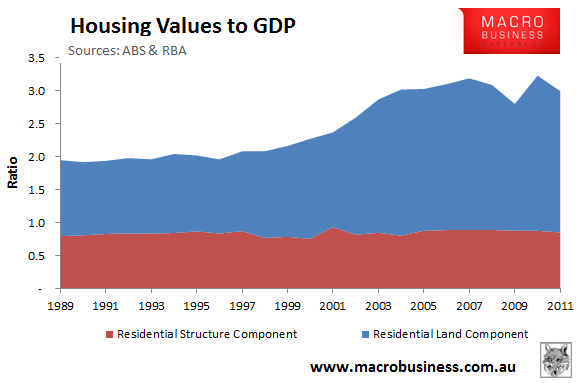
With land values deflating and the structure component remaining stable, the percentage of Australian dwelling values taken up by land has also fallen to 69% in June 2012, from 73% in June 2010 and 72% in June 2011 (see below chart).
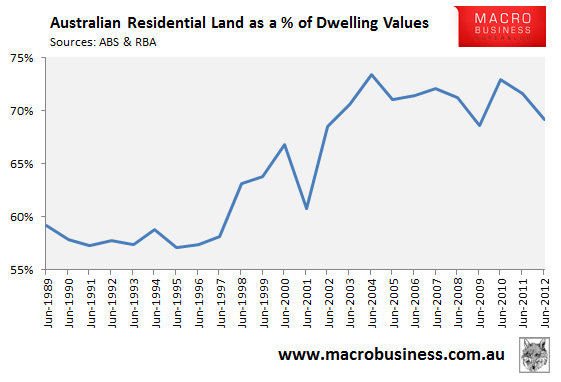
The release of the annual state accounts yesterday by the ABS has enabled me to calculate the change in land values to gross state product (GSP) across Australia’s states and territories, which is presented in the below chart:
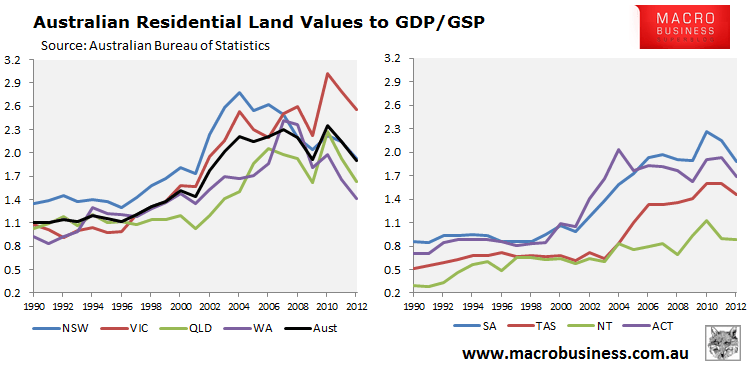
Residential land values continued to deflate across all of Australia’s states and territories. At 2.56 times GSP, Victoria continues to have the most expensive residential land values in the country and the Norther Territory (0.88) the cheapest. All, however, have values that are well above the levels existing at the beginning of the series in 1990.
The nominal change in residential land values annually and from peak is shown in the next chart:
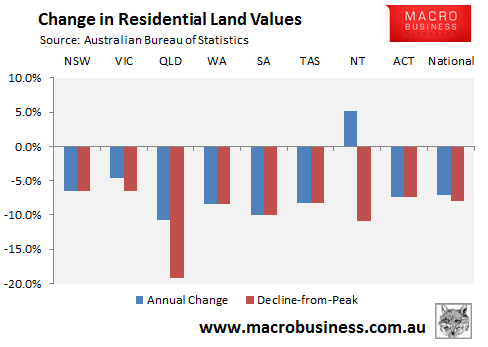
All states and territories, except the Northern Territory, experienced declines in nominal land values over the year to June 2012, with Queensland (-10.7%) leading the way. Queensland is also to biggest loser overall, with values down -19.1% since peak, well above the national average loss of -8.0%.
The story is a little different when changes in residential land values are compared against GSP/GDP. Here, Western Australia and Queensland are the biggest losers over the past year (both down by -15%), whereas Western Australia (-42%) and New South Wales (-31%) have suffered the biggest declines from peak reflecting the earlier peaking of land values in New South Wales’ case and the higher GSP growth rate and early peak in Western Australia (see below chart).
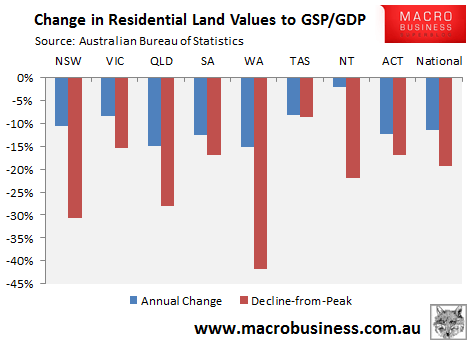
From the above charts, you would have to conclude that Victoria is at greatest risk of experiencing a large correction to residential land values (and by extention house prices) in the years ahead. It’s values experienced the biggest peak, they remain the highest in the nation, and have suffered the smallest nominal declines to date (-6.4% versus the national average of -8.0%).
Twitter: Leith van Onselen. Leith is the Chief Economist of Macro Investor, Australia’s independent investment newsletter covering trades, stocks, property and yield. Click for a free 21 day trial.

